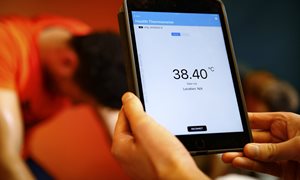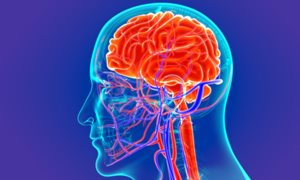 The United States has published the new physical activity guidelines in the JAMA Journal (Journal of the American Medical Association). The main change as compared with the previous guideline from 2008: even a small amount of physical activity results in substantial health benefits. Together with American cardiologist Paul Thompson, Thijs Eijsvogels wrote the accompanying editorial commentary.
The United States has published the new physical activity guidelines in the JAMA Journal (Journal of the American Medical Association). The main change as compared with the previous guideline from 2008: even a small amount of physical activity results in substantial health benefits. Together with American cardiologist Paul Thompson, Thijs Eijsvogels wrote the accompanying editorial commentary.
Achievable guidelines
The new guidelines sound achievable and realistic: “An adult should perform 150 minutes of moderate-intensity or 75 minutes of high-intensity activity per week. Carrying out muscle-strengthening exercises at least two days a week is also recommended. In addition, the minimum number of physical activity minutes per session has been abolished (this was ten minutes) and also the minimum number of sessions per week. It is now clear that small amounts of physical activity have benefits too.”
Some of the health benefits of physical activity can also be noticed immediately. For example, blood pressure and the concentration of fat in the blood are reduced after sports activities, while sensitivity to insulin increases. It is therefore a misconception that you will have to train for weeks or even years before you will see any impact on your health.
Get moving
In the accompanying editorial commentary Thijs Eijsvogels emphasizes that everyone benefits from an active lifestyle. “You obtain the most health benefits if you change from an inactive lifestyle to doing a small amount of physical activity regularly. So stretch your legs if you sit for longer than thirty minutes, take the stairs at work, get on your bicycle to go to the supermarket or take a walk in your lunchbreak. All these short sessions of physical activity added together result in greater health benefits than you would expect.”
In their commentary Eijsvogels and Thompson call on doctors from now on to ask their patients questions on their physical activity pattern as standard. Eijsvogels: “A simple question like ‘How many minutes do you do sports and physical activities per week?’ provides important information on a patient’s activity pattern. Based on this, personalized advice can be given to do more physical activity and therefore improve health. Perhaps this is the cheapest and most efficient way towards a healthier life.”
________________
* Paul D. Thompson, Thijs M. H. Eijsvogels - New Physical Activity Guidelines. A Call to Activity for Clinicians and Patients
* Physical Activity Guidelines for Health and Prosperity in the United States
* Video: Physical Activity Guidelines for Americans, 2nd Edition
* Info Nederlandse richtlijn
Thijs Eijsvogels is member of theme Vascular damage.
Related news items

Grants for heart and kidney research Two awards to Radboudumc in Open Competition ENW-XS
21 July 2022Two researchers from the Radboudumc receive a grant from the NWO within the Open Competition of the Exact and Natural Sciences. They are Thijs Eijsvogels, who studies the heart, and Pieter Leermakers, who studies the kidneys.
go to page
Your heart rate as a thermometer Research Olympic athletes will be followed up during 4Daagse
18 July 2022Body temperature can be determined from heart rate. This is what research by the Radboudumc among Olympic athletes shows. Athletes can use this method during training to eventually perform better in the heat. The technique is now being further investigated among participants in the 4Daagse.
go to page
Young Investigator Award for Esmée Bakker
14 April 2022 Esmée Bakker received the Young Investigator Award for her abstract ‘Acute and long-term mortality rates among participants of mass-participation sports events versus the general population.’ go to page
Want to be sustainable and cool? Choose fans more and aircon less Keep cool and help the environment
12 April 2022 A recent published study led by the University of Sydney, has found using indoor fans more often allows people to reduce their air conditioner use without changing how hot they feel, paving a way for reducing future energy use and greenhouse gas emissions. Coen Bongers, is one of the co-authors. go to page

